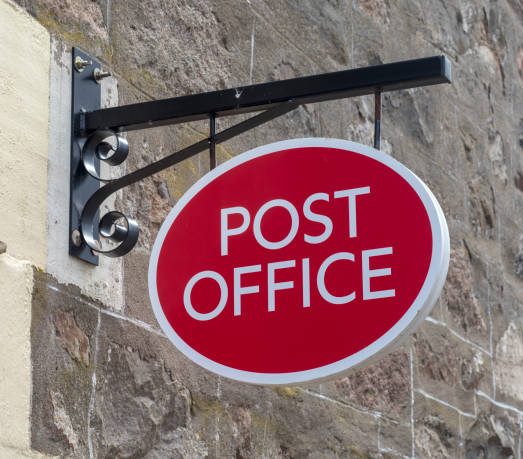Category: Insights
By providing claimants with the means to pursue a meritorious claim, often against defendants that are much larger and better resourced than they are, litigation funding has supporting access to justice and upholding the rule of law at its core.
Group and class actions provide an important route for large numbers of individual claimants who have suffered a similar loss to seek redress through the courts. The defendants are typically large and well-resourced corporates so, without funding such legal actions could not proceed. The availability of funding for these actions helps to ensure justice for all affected individuals and entities. For example, Therium funded a group of claimants following the Post Office scandal, which was one of the UK’s most egregious miscarriages of justice, with over 700 sub-postmasters prosecuted over a faulty computer system that had shown account shortages. Following a hard-fought legal battle funded by Therium, substantive justice was achieved and the sub-postmasters wrongful criminal convictions were overturned. They also secured a public inquiry and ultimately compensation from the government for all affected sub-postmasters. This case highlights how litigation funding can provide access to justice for victims who lack the resources to seek redress from a state-owned company, which deployed its extensive resources in an attempt to defeat the claims made against it.
The Competition Appeal Tribunal was set up in the UK to allow both opt-in and opt-out claims to be brought against companies that have breached competition law. The tribunal made litigation funding compulsory, recognising the importance and necessity of funding in enabling access to justice.
As well as enabling access to justice, litigation funding plays an important role in upholding the rule of law by ensuring that bad actors can be held accountable and by deterring companies from breaking the law and breaching governance standards.
Litigation funding also strengthens the rule of law in jurisdictions where it is weak. Investor-state dispute settlements (ISDS) arbitrations are a way for foreign investors to resolve disputes where states have breached their treaty obligations. Funding this type of legal action helps to ensure that states are held accountable. This acts as a deterrent against bad governance and corruption and ensures that international law is upheld, particularly in regions of the world where the rule of law and governance are weak.
Therium also leverages its experience of investing in law in order to promote social justice. Therium Access, the industry’s first not-for-profit vehicle, provides funding by way of grants for claims, organisations and projects that promote access to justice for the most vulnerable and marginalised in society. Therium Access marks Therium’s wider commitment to the pursuit of justice and the rule of law. As the justice gap continues to widen, the work of these organisations is increasingly important. Funding from Therium allows them to continue to deliver key services that support social and legal justice.
Legal finance comes in many forms as the industry continues to grow and evolve, but ultimately, by promoting access to justice and helping to uphold the rule of law, litigation funding plays an often crucial role in supporting the functioning of our legal systems.
Litigation funding: a useful tool for forward-looking GCs and in-house lawyers
Crafty Counsel Disputes Day in November 2022 brought together in-house GCs and legal teams in London to discuss how to successfully manage litigation and other disputes. Panellist and Therium Investment Manager Chris Wilkins shared his insights into how litigation funding can be a game changing finance tool for corporates.
The best general counsel and in-house lawyers are always focused on how they can add value to their businesses. Litigation funding provides an opportunity to do just that.
Litigation funding takes many forms, but typically a litigation funder will cover the costs and expenses of running a claim in exchange for a share of the proceeds if the claim is successful. Aggrieved parties without the means to self-fund their claims are obvious users of litigation funding, but even well-capitalised corporates are increasingly looking to use litigation funding as a means to manage the costs and risks of their disputes or bring cash onto their balance sheets by monetising claims or awards. These solutions can result in substantial freed-up capital for more productive uses across the business, such as to fund growth.
As awareness and understanding of litigation funding grows, in-house lawyers are becoming much less concerned about what it means for control of their litigation strategy. In England, by law, funders cannot exercise undue control over the claim. Many funders are litigators by background, who can provide additional expertise to the case team, but they remain passive providers of capital. In addition, the presence of third-party funding can also provide a tactical advantage by demonstrating the seriousness of a claim to the other side and to shareholders and the market.
After many years of evolution, litigation funding is now accepted as a key part of the litigation landscape and disputes process. As the industry continues to grow and develop, the ways in which corporate clients can access capital to fund meritorious claims have also increased, giving general counsel and in-house lawyers a useful tool to realise value from their disputes.
Chris Wilkins
Investment Manager, Therium Capital Management
Law360: How to improve your chances for getting your case approved for litigation funding. Read the full article below.
Law360: What mainstreaming of litigation finance means for the industry. Read the full article in the link below.
Neil Purslow, John Byrne, Christoph Kuzaj, & Timothy Mayer who have been recognised in Lawdragon’s 100 Global Leaders in Legal Finance.
Approximately two weeks ago, the world as we know it changed.
Every assumption that governed our daily lives was uprooted. Grabbing a bite to eat with friends stopped. For most, commuting to work ceased. Touching an elevator button became tinged with the fear of contracting an unknown disease. Riding a subway and hearing the person next to you cough caused panic. Stock markets collapsed and businesses across the country simply shut their doors, laying off millions. Courts shut down.
Those who were merely frightened but kept their jobs were the lucky ones. The unlucky ones lost their jobs, or worse, were infected with this mysterious disease called COVID-19 and began an unthinkable journey from which many have recovered but others have not.
In spite of these upheavals, businesses are attempting to adapt. Those with jobs are continuing to perform their duties, albeit in large part from home. And life continues. Making sense of these changes and their impact remains challenging but is also important so that people can plan, take steps to minimize harm, and protect themselves and their livelihoods from continued disruption to the extent possible.
That is where we are today. But it may help to keep in mind, as California Governor Gavin Newsom has said, that this pandemic occupies only a moment in time. At some point, we will come out the other side. For those who find solace in contemplating that future, here is our prognosis for the short-and longer-term effects of COVID-19 on litigants, law firms, and the litigation finance industry.
Litigants
In the short term: Already, the coronavirus outbreak has given rise to lawsuits tied directly to the disease or to the economic disruptions that have followed. Restaurants and other business simply seeking to survive have filed suit against their insurers to recover some portion of their losses. Class action lawyers have filed suit against Norwegian Cruise lines which allegedly told sales reps to lie about passengers’ risk of contracting the virus. Investors have also sued a biotech company for claiming it could develop a COVID-19 vaccine in three hours, while other class action lawyers have filed suit against Germ X, which made advertising claims that its hand sanitizer protected against coronavirus. These claims represent the smallest fraction of suits that will likely get filed and which lawyers will litigate for years to come.
Beyond this immediate burst of litigation, the judicial system needs to begin functioning anew. At present, dozens of federal courts throughout the country are closed or have delayed trials while approximately 30 state court systems and the District of Columbia have followed suit. Indeed, the Supreme Court postponed oral arguments on more than a dozen cases for the first time since the 1918 Spanish flu pandemic.
Once the judicial system restarts (and it will), the new normal of how lawyers and clients litigate will change at least for the short term to medium term. Already, courts, arbitration tribunals, and mediators are requesting that litigants refrain from attending in-person hearings or trials in favor of video proceedings. Ignoring the ramification of these closures on the criminal justice system for a moment and focusing on civil litigation, every practitioner has to ask whether such alterations in how the practice of law is conducted will become regularized and how such disruptions might impact the cases they are presently prosecuting.
In the longer term: When COVID-19 reached America, half a trillion dollars in M&A deals were waiting to close. All of those deals are now imperiled, with buyers as deep-pocketed as Volkswagen (which had inked a deal for U.S. truck maker Navistar) expressing reservations about going through with them. It appears a near certainty that a massive wave of disputes over the duty to consummate these deals and perform other contracts will occupy the courts for years. Fewer than 10% of force majeure clauses contain a carve out for pandemics, leaving ample room for argument over that doctrine, as well as defenses like impossibility, impracticability, and frustration of purpose.
Conventional wisdom holds that economic slowdowns are accompanied by a compensating increase in litigation, which smooths out the economic ride for those connected to the legal profession. These contractual disputes could bear that wisdom out. But they aren’t likely to if courts remain closed for an extended period. Also, while remaining humble about my ability to predict the future, I will point to this unfortunately prescient piece about the impact of a recession on BigLaw, which I wrote in late December. There, I discussed that conventional wisdom did not hold in the Great Recession; demand for litigation was down in 2008, 2009, and 2010. The most likely reason was fear: “As corporate resources become more precious in a recession, general counsel may have been spooked by the thought of spending them on cases – even strong and valuable ones – only to lose.”
Law firm litigation departments
Short term: At the moment, law firms do not have the luxury of thinking far into the future. They are busy staying operational in our current, locked-down state. With so many lawyers and staff working from home, multiple AmLaw 50 firms have experienced network capacity issues. Normally, the impact of slowing economic activity takes time to hit law firms, but this situation appears different. While law firm mergers did not fall off in 2008 or 2009, for instance, the current disruption to the M&A market appears to have hit firms with full force. The merger between Troutman Sanders and Pepper Hamilton, for instance, has been delayed to July 1.
Longer term: The expected boom in contractual disputes may provide a cushion of sorts for litigation-focused law firms. But most litigation departments, particularly at AmLaw200 firms, are sitting in a life raft with any number of other practice groups, some of which could get heavy in a recession or depression. This experience will prove a stiff test of how well law firms learned the lessons of the Great Recession. Many responded by diversifying their practice mix and improving their balance sheets. Already, however, law firms are asking banks for credit line increases at a rate six times higher than this time last year.
That’s a warning sign that law firms, like their clients, are experiencing cashflow challenges. The biggest outgoing flow, of course, is compensation. Law firms had just begun to loosen the spigot a bit, with promotions increasing 20% between 2018 and 2019. Now, it seems clear that if and when COVID-19 impacts stretch into their fourth, fifth, and sixth month—if not sooner—layoffs will occur and firms that do not maintain strong balance sheets will not survive.
Litigation funding
Short term: For corporate plaintiffs and law firms with claims to prosecute and who are facing immediate and pressing cash flow needs, litigation finance offers a potential to relieve at least some degree of uncertainty. That’s not to say that litigation finance will emerge from the pandemic as the answer to every problem. To this point, investors have been attracted to litigation finance in part because its returns are not correlated to the broader economic cycle. The value of a products liability case, after all, does not depend on what happened to the Dow last week. We’re realizing now, however, that there is a limit on that lack of correlation. The disruption from COVID-19 is so severe—shuttering courts, stopping trials—that it is pausing returns on lawsuits as it pauses the rest of the economy.
Longer term: The legal industry has been incorporating novel ways to manage risk while seeking to redefine the billable hour business model for decades. Without doubt, the economic impact of recent events will likely accelerate this shift and provide litigation finance companies an opportunity to partner more robustly in this process with law firms and corporate entities large and small. For example, large firms that had to lay off attorneys may consider litigation funding as a way to further diversify their workload and keep cashflow coming to stave off additional cuts in the future. Similarly, attorneys lacking the security of a big law job and failing to qualify for conventional recourse capital will likely turn to litigation finance companies to seed their practices and to develop entirely new firms. Equally as important, larger corporate entities may begin to see the value of entering into more long-term dedicated facility arrangements with litigation finance companies as a hedge against lean economic times while small mom and pop business rely upon such arrangements to free up cash flow for recovery, growth, and expansion.
Ultimately, this is all speculation. COVID-19 has already laughed at the plans many of us had for this year. We know only this: that the virus will pass, and that until then, we very much look forward to the day when lawsuits are our biggest concerns.
Litigation finance can transform litigation into a financial asset
Litigation can be a burden for finance directors and is certainly a major distraction from their main jobs.
The financial costs of legal disputes can be massive for a company, especially if a case is lost, with potential adverse impact on financial statements, metrics and competitive positioning – the full extent of which may not be known until the end of the case.
Added to that, litigation can run on for several years and many large corporates have to deal with simultaneous cases, multiplying the drain on resources. Over half of UK respondents in law firm Norton Rose Fulbright’s latest global litigation report said they faced new law suits launched against them in the last year with a fifth defending as many as 50 new claims.
As business becomes ever more global and complex, so too do legal disputes, with the commensurate increase in costs. On top of all this, FDs face the ongoing pressure of needing to cut their legal spend and reduce the amount of cash they have tied up in lengthy litigation.
Litigation funding, or litigation finance as it is increasingly being termed, is a tool that UK FDs are starting to turn to for help. The industry was given a significant boost by Lord Justice Jackson’s approval as part of the reforms of English commercial litigation which came into force in April 2013.
Companies have been using litigation funding as it pays for all costs related to claims against defendants, including the other side’s costs if the case is lost. Funders only receive payment, typically a multiple of their investment, if the case wins. Such off-balance sheet funding has meant that organisations have been able to pursue meritorious claims that they perhaps might not have progressed without the backing of a funder.
From the funders’ point of view they will only take on cases they believe have a strong chance of winning, based on their extensive due diligence and experience. But while most of the cases they back do win, given the complexities and highly variable factors affecting the outcome of litigation, not all funded cases are successful.
That said, many companies, especially multinationals, typically don’t need the financial resources of a funder to pay for their legal claims. But where they can benefit is by using litigation funding as a smart form of corporate finance. This is becoming established practice in the US and generating increasing interest from FDs in the UK and Europe.
Investing in Litigation claims
The reason why litigation finance is attractive to FDs is that it is able to transform litigation into a financial asset: the funder provides financing against a particular form of contingent asset being the proceeds of the litigation. Without the burden of financing the litigation and potentially through raising the funds that would have been attributed to the case as working capital, the company can benefit by generating cash flow for other uses and from improved financial metrics. Companies have been able to raise money not just for the costs of litigation they are bringing but also to defend claims against them or even fund unrelated projects.
For those companies that are managing ongoing multiple legal disputes, FDs are able to raise finance across the portfolio of cases and, in so doing, generate better terms than funding individual matters on a case-by-case basis.
Investment levels
Recent investment levels in litigation funding reflect the market’s momentum: funders in London raised over half a billion sterling in 2015, including £200m by Therium, and fund raising into the sector has continued throughout 2016. Our own research of UK litigation partners at leading law firms we conducted with Just Costs Solicitors also highlights how far funding has come since Jackson’s reforms: 79% of partners said they saw new funded cases in the last year, and most said funding is now a central part of their discussions with clients.
We expect to see this growth trajectory continue as boards use their legal claims as financial assets. This growth is not confined to the UK. The US funding market continues to develop rapidly, continental Europe is busy, and south east Asian jurisdictions like Hong Kong and Singapore are warming up.
There will continue to be considerable litigation in financial services in the aftermath of the Libor and forex scandals and in areas including the mis-selling and mis-valuation of investment products, to companies and financial institutions as well as to individuals. Other stand-out areas that will be a source of many disputes will be the energy industry, much of the litigation relating to the decline in the price of oil, and the mining sector, hit by the collapse of commodity prices.









